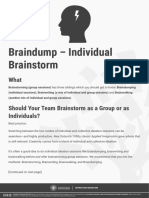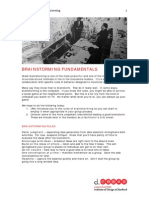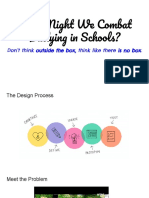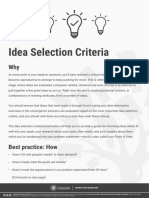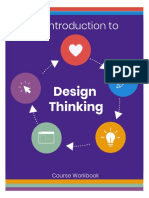0% found this document useful (0 votes)
55 views5 pages8 Essential Brainstorming Rules
The document discusses 8 rules for effective brainstorming, including setting a time limit, focusing on the problem statement, deferring criticism, encouraging unusual ideas, aiming for quantity over quality, building on others' ideas, using visuals, and focusing one conversation at a time. Brainstorming is part of the design thinking process to generate many potential solutions to a problem.
Uploaded by
Fadma SariCopyright
© © All Rights Reserved
We take content rights seriously. If you suspect this is your content, claim it here.
Available Formats
Download as PDF, TXT or read online on Scribd
0% found this document useful (0 votes)
55 views5 pages8 Essential Brainstorming Rules
The document discusses 8 rules for effective brainstorming, including setting a time limit, focusing on the problem statement, deferring criticism, encouraging unusual ideas, aiming for quantity over quality, building on others' ideas, using visuals, and focusing one conversation at a time. Brainstorming is part of the design thinking process to generate many potential solutions to a problem.
Uploaded by
Fadma SariCopyright
© © All Rights Reserved
We take content rights seriously. If you suspect this is your content, claim it here.
Available Formats
Download as PDF, TXT or read online on Scribd
/ 5







